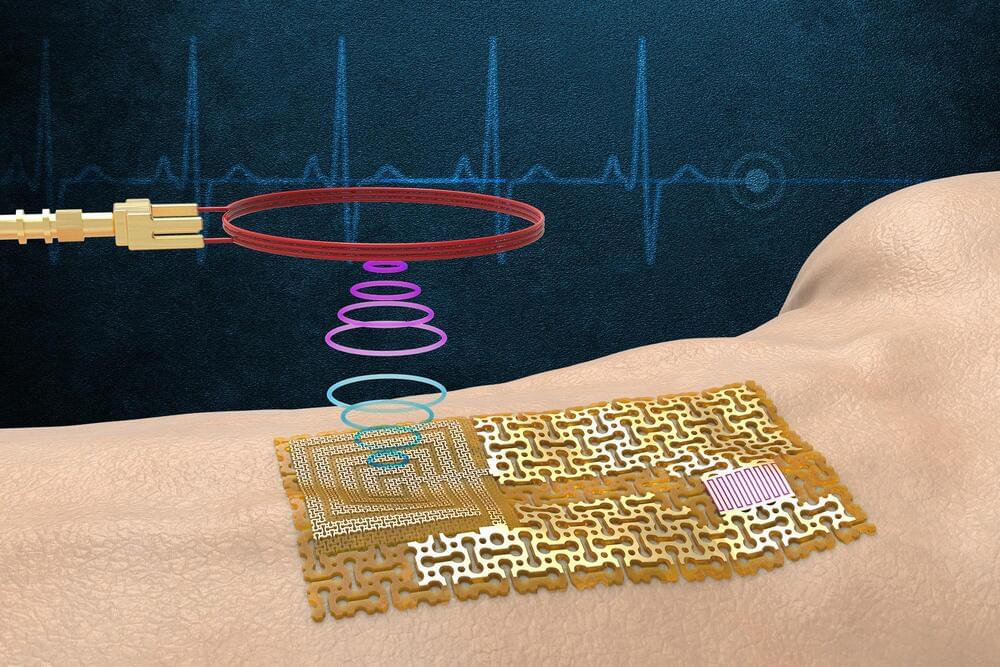A GPT-3-like AI model for science would accelerate innovation and improve reproducibility. Creating it will require us to unlock research.



Summary: Researchers have developed a new sensor that allows scientists to image the brain without missing signals for an extended period of time and deeper in the brain than current technology allows.
Source: Baylor College of Medicine.
As you are reading these words, certain regions of your brain are displaying a flurry of millisecond-fast electrical activity. Visualizing and measuring this electrical activity is crucial to understand how the brain enables us to see, move, behave or read these words.
A novel method for measuring nanoparticle size could have applications in industry and basic materials science research.
Nanoparticles are present in everything from paints to pharmaceutical products. While nanoparticles have many important characteristics, such as molecular composition and shape, it is their size that determines many chemical and physical properties. A new technique relying on an optical vortex—a laser beam whose wave fronts twist around a dark central region—allows researchers to characterize nanoparticle size rapidly and continuously [1]. This light-based size probe might one day find applications in numerous industrial settings and aid fundamental materials science research.
It is difficult to precisely synthesize nanoparticles with the desired dimensions, so manufacturers must often validate that their nanoparticles have the right size to comply with regulations and to ensure product quality. There are many ways of determining nanoparticle size, but one popular approach, dynamic light scattering (DLS), is based on measurements of Brownian motion, the random particle movement caused by jostling from the surrounding liquid medium. In DLS, the Brownian motion is determined by measuring fluctuations in laser light scattering from the nanoparticles. In general, the faster the Brownian motion, the smaller the particles. But current techniques are generally not capable of characterizing the largest particles and measuring them continuously.



Scientists have discovered the remarkable impact of reversing a standard method for combatting a key obstacle to producing fusion energy on Earth. Theorists at the U.S. Department of Energy’s (DOE) Princeton Plasma Physics Laboratory (PPPL) have proposed doing precisely the opposite of the prescribed procedure to sharply improve future results.
Tearing holes in plasma
The problem, called “locked tearing modes,” occurs in all today’s tokamaks, doughnut-shaped magnetic facilities designed to create and control the virtually unlimited fusion power that drives the sun and stars. The instability-caused modes rotate with the hot, charged plasma — the fourth state of matter composed of free electrons and atomic nuclei that fuels fusion reactions —and tear holes called islands in the magnetic field that confines the gas, allowing the leakage of key heat.


Circa 2016 face_with_colon_three
A subset C of infinite-dimensional binary cube is called a perfect binary code with distance 3 if all balls of radius 1 (in the Hamming metric) with centers in C are pairwise disjoint and their union cover this binary cube. Similarly, we can define a perfect binary code in zero layer, consisting of all vectors of infinite-dimensional binary cube having finite supports. In this article we prove that the cardinality of all cosets of perfect binary codes in zero layer is the cardinality of the continuum. Moreover, the cardinality of all cosets of perfect binary codes in the whole binary cube is equal to the cardinality of the hypercontinuum.

The team’s sensor design is a form of electronic skin, or “e-skin” — a flexible, semiconducting film that conforms to the skin like electronic Scotch tape. The heart of the sensor is an ultrathin, high-quality film of gallium nitride, a material that is known for its piezoelectric properties, meaning that it can both produce an electrical signal in response to mechanical strain and mechanically vibrate in response to an electrical impulse.
The researchers found they could harness gallium nitride’s two-way piezoelectric properties and use the material simultaneously for both sensing and wireless communication.
In their new study, the team produced pure, single-crystalline samples of gallium nitride, which they paired with a conducting layer of gold to boost any incoming or outgoing electrical signal. They showed that the device was sensitive enough to vibrate in response to a person’s heartbeat, as well as the salt in their sweat, and that the material’s vibrations generated an electrical signal that could be read by a nearby receiver. In this way, the device was able to wirelessly transmit sensing information, without the need for a chip or battery.

Numbers are an integral part of programming. Hence, programming languages support various datatypes to represent different kinds of numbers and provide various methods to work with them. Each of these datatypes comes with certain limitations on the range of numbers they can represent; while some can represent a small range of numbers, others support a very large range of numbers. Depending on our use case, we can choose from one of them. But none of them have a way to represent infinity.
We often encounter and have to deal with infinity in many real-world scenarios, and so we need a way to represent them in programming languages. In this tutorial, we’ll learn how to represent and work with infinity in Python.